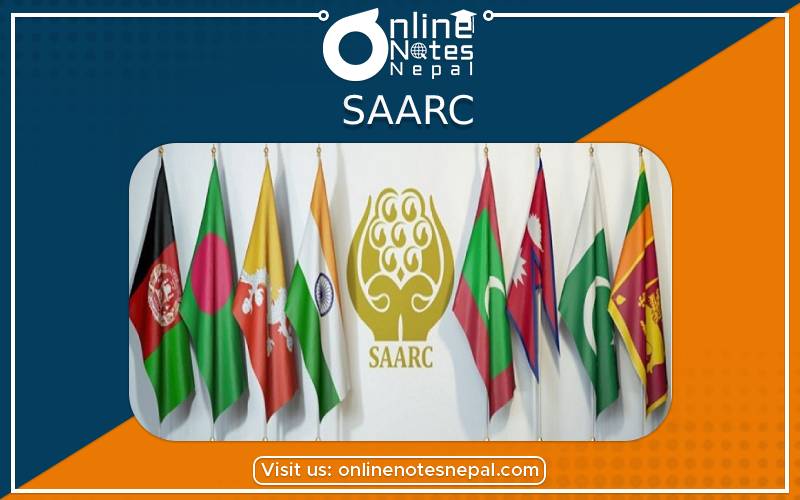Published by: Nuru
Published date: 25 Jan 2022

SAARC was established in 1985. Its members are Nepal, India, Bangladesh, Pakistan, Sri Lanka, Maldives, Bhutan, and Afghanistan. SAARC stands for South Asian Association for Regional Co-operation. The term regional co-operation denotes that the main purpose of establishing this organization is to help and co-operate one another in all matters in the region.
Aim of SAARC:
The aim of the association was to achieve a better result in the economy, education, social sectors and establish the region as a peaceful and prosperous region.
Importance of SAARC:
The logo of SAARC signifies that the member countries are seven. But, SAARC has to be changed and made eight because its members have reached eight including Afghanistan. They want to live in friendship, good understanding, and peace. Here, common problems can be shared and solved with collective efforts.
SAARC has its secretariat in Kathmandu. The head of the secretariat is called the Secretary-General. He is appointed for a term of three years from among the member countries. He is the main executive body of SAARC.
Formation of SAARC are:
The main goal of the association is to accelerate the process of economic and social development in member states, through joint action in the agreed areas of cooperation. With the initiation of the Former President of Bangladesh, Zia-Ur- Rahman, the first meeting was held in Colombo, Sri Lanka on April 21-23,1981. The SAARC founder member set up five study groups, namely:
The second meeting of the foreign secretaries was held in Kathmandu on November 2-4,1981. The meeting set up three new study groups. They were:
The foreign secretaries of seven countries met 14 times to discuss the plan for action and programs. The association of these countries was named as South Asian Association for Regional Co-operation (SAARC).
1. Programming Committee:
It consists of comprising the senior official's meetings prior to the Standing Committee sessions to Secretariat Budget. It also finalizes the calendar of activities and takes up any other matters assigned to it by the Standing Committee.
2. Technical Committee:
It comprises representatives of member states and formulate programs and prepare projects in their respective fields. It is responsible for monitoring the implementation of such activities and reporting to the Standing Committee. The chairmanship of each Technical Committee normally rotates among member countries in alphabetical order, every two years.
3. Council of Ministers:
Foreign Ministers of member states are responsible for the formulation of policies. It is the main functional part of SAARC. It reviews the past cooperation and sets up the additional mechanism for a better partnership.
4. Standing Committee:
Foreign Secretaries of member states is entrusted with the overall monitoring and coordination of programs. It approves identifying new areas of cooperation based on appropriate studies. It may meet as often necessary but in practice, it meets twice a year and submits its reports to the Council of Ministers.
5. Summit Meetings:
The highest authority of the association rests with the Heads of State or Government. It meets in different member countries according to alphabetical order. Because of summit meetings, the bilateral and regional problems are solved and it brings the countries closer to one another.
6. Other Meetings:
A high-level committee on Economic Cooperation (CEC) has been established in 1991, for identifying and implementing programs in the core areas of economic and trade cooperation.
It consists of a Meeting of Secretaries in-Charge of Poverty, a Meeting of Finance/Planning Secretaries, and a Meeting of Finance/Planning Ministers.
It was established in Kathmandu on 16 January 1987. Secretary-General is the chief of the secretariat. The SAARC Secretariat is responsible for coordinating and monitoring the implementation of SAARC activities and service the meetings of the association.
It serves as the channel of communication between SAARC and other international organizations. The Secretary-General is appointed by the Council of Ministers upon nomination by a member state, for a period of two years.
SAARC programs and mutual cooperation are as follows:
1. Education:
The leaders agreed to promote regional cooperation in the field of vocational education and training. They directed their Education Ministers to develop a Regional Strategy for Enhancing the Quality of Education in order to raise the standards of South Asian educational institutions in order to better serve the youth in the region.
2. Agricultural and Food Security:
The Heads of State or Government agreed to increase investment, promote research and development, facilitate technical cooperation and apply innovative, appropriate, and reliable technologies in the agriculture sector for enhancing productivity to ensure food and nutritional security in the region.
3. Environment:
The leaders agreed on the effective implementation of the SAARC Agreement on Rapid Response to Natural Disasters, the SAARC Convention on Cooperation on Environment, and the Statement on Climate Change. It also includes taking into account the threats posed by climate change to some SAARC member states.
4. Health:
The leaders recognized the importance of achieving universal health coverage (UHC), improving health regulatory systems, prevention for emerging and reemerging diseases, and the challenges posed by antimicrobial resistance and non-communicable diseases.
5. Social Protection:
The leaders acknowledged the special needs of the elderly, women, children, differently-abled persons, unemployed persons, and persons working at hazardous sites. They also agreed to develop and strengthen social protection for them and to share best practices in this regard.
6. Science and Technology:
The leaders agreed to develop the capacity of the member states to apply space technology to socio-economic development and the welfare of the people through experience sharing among themselves.
For all these programs and the other IPAs, expenses are met according to the following ways by the member countries:
| Countries | Percentage of Expenditure |
| India | 30.32 |
| Pakistan | 22.52 |
| Nepal | 10.72 |
| Bangladesh | 10.72 |
| Sri Lanka | 10.72 |
| Afghanistan | 5 |
| Bhutan | 5 |
| Maldives | 5 |